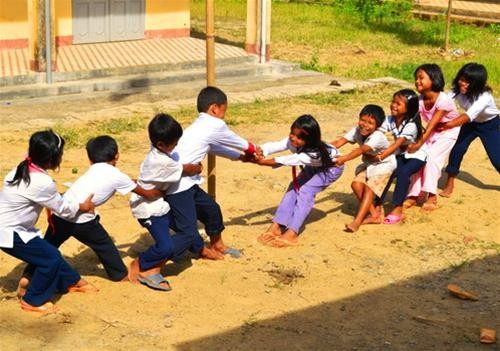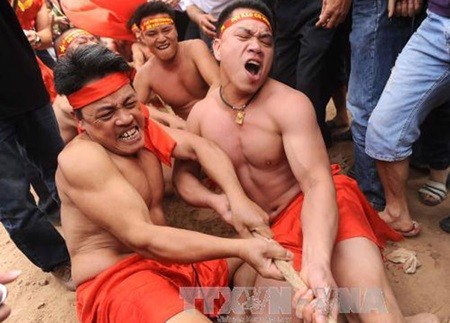(VOVworld) - Vietnam’s folk game tug-of-war and its ritual was recognized as a multinational project for the safeguarding of intangible cultural heritage by UNESCO at the 10th session of the Intergovernmental Committee for Safeguarding of Intangible Cultural Heritage in Namibia. Vietnam now has 10 UNESCO-recognized world cultural heritages.
Tug-of-war is played in different ways in the East and Southeast Asian countries, the Republic of Korea, the Philippines, Cambodia and Vietnam which applied to UNESCO for recognition of this game. Tug of war with its rituals has been played in Vietnam for a very long time. The game is played differently in different countries reflecting the lifestyle, culture and history of the host country. People often play the game during New Year festivals to pray for favorable weather and bumper crops. In Cambodia, the game is practiced by three communities living around the Tonle Sap Lake, near Angkor Watt. In the Philippines, tug of war is played in Hungduan, which is famous for vast rice fields. The game is popular in many regions around the Republic of Korea. Doctor Nguyen Van Huy of the National Heritage Council says: “Southeast Asian culture is reflected widely in tug-of-war and its rituals. People play the game to pray for bumper crops, health and peace. This is an age-old cultural foundation”.
 |
Tug-of-war is popular all over Vietnam, but especially in Lao Cai, Vinh Phuc, Bac Ninh and Hanoi. The rituals that accompany the game embrace certain local cultural features. Tug-of-war is part of traditional festivals in these localities. To play the tug-of-war game, players are divided into two teams which pull on each end of a stout rope. In Soc Son district on the outskirts of Hanoi, people use an old bamboo tree instead of a rope. At the Tran Vu Temple festival held annually on the 3rd day of the 3rd lunar month in Ngoc Tri village, Long Bien district, the locals do a sitting tug-of-war. Le Van Cu, Head of the Tran Vu Temple says the sitting tug-of-war game has long been a part of local New Year festivals. Cu says local people play the game not just for fun but to express their prayers to the Genies. Cu says local people are happy to know that tug-of-war is recognized as a world cultural heritage: “We are very happy with the recognition. We are proud of our sitting tug-of-war game. We play the game in Dang Dong village. We are divided into different teams. We hold ceremonies to worship the genies before and after the game”.
 |
Elders in Ngoc Tri village say there’s a legend about the sitting tug-of-war game. The legend is that the village used to suffer from such severe drought that conflict often broke out between the young men of three hamlets, Cho, Dia, and Duong (which is now Thach Ban Commune). It is from the ensuing struggle over water buckets that the game was drawn.
In the game, two teams sit on the ground and tug a rope 30 metres long that is passed through a hole in a wooden post fixed firmly in the ground. Doctor Nguyen Van Huy said: “The game symbolizes the desire of farmers for good luck, bumper crops and favorable weather. It also reinforces and renews social relationships and strengthens communal solidarity. The focus is not on winning but on enjoying the game thoroughly. Those are the cultural characteristics that made the game a World Cultural Heritage”.